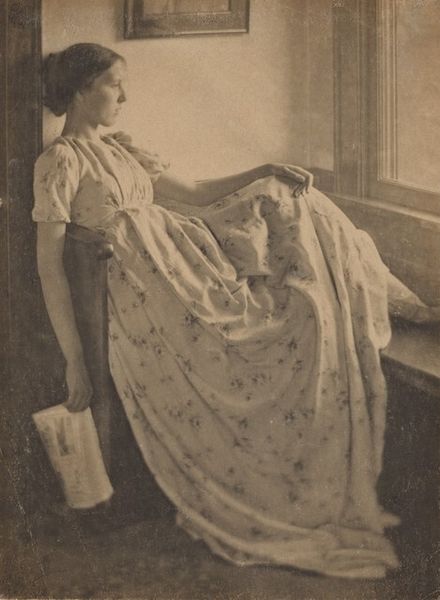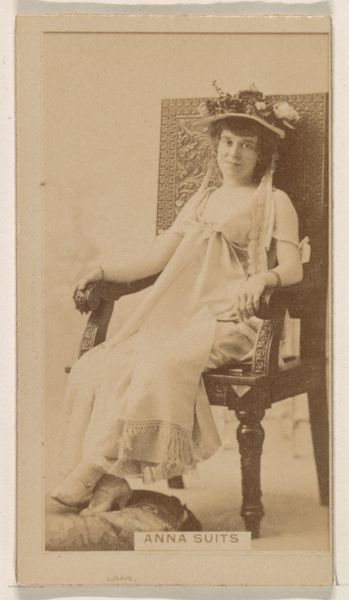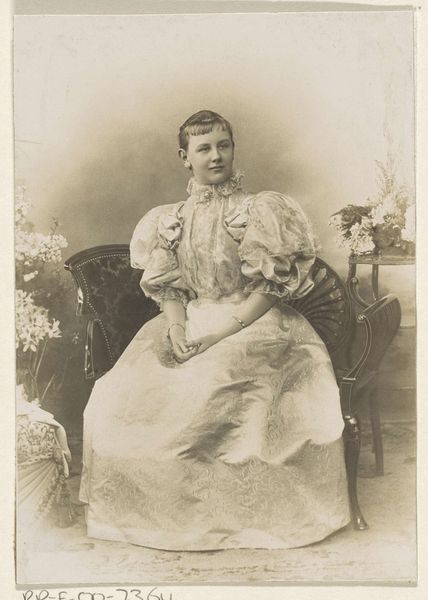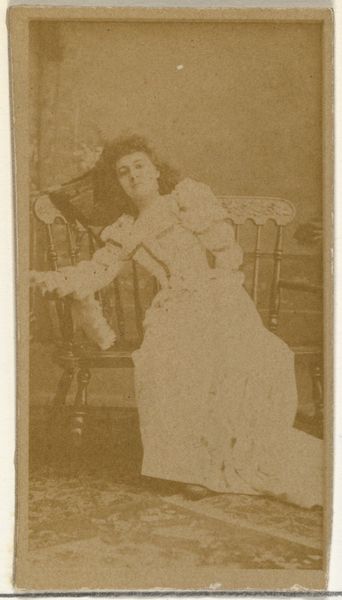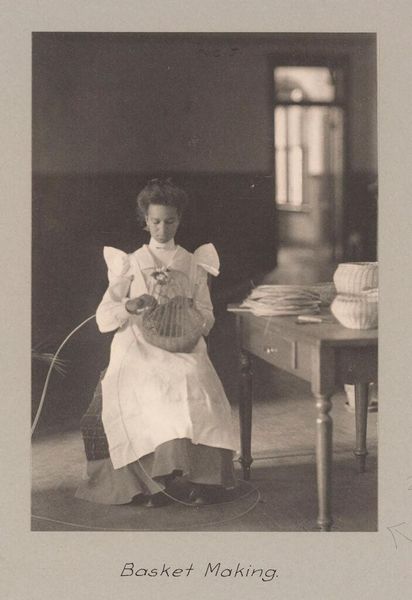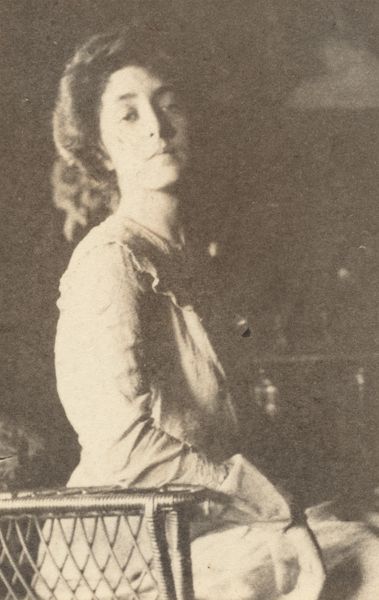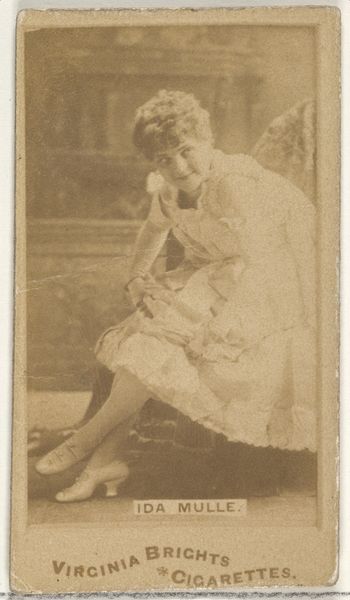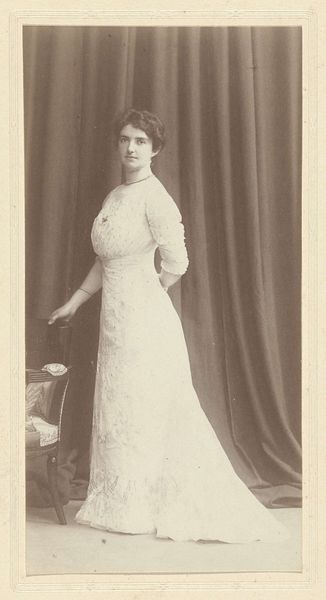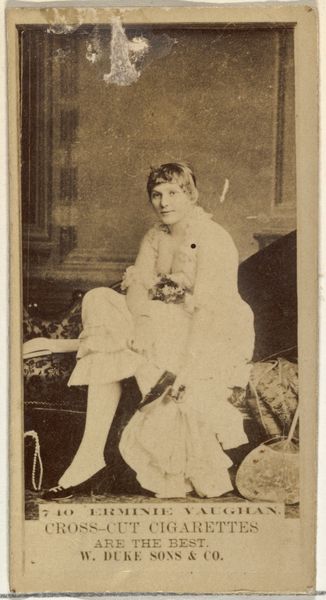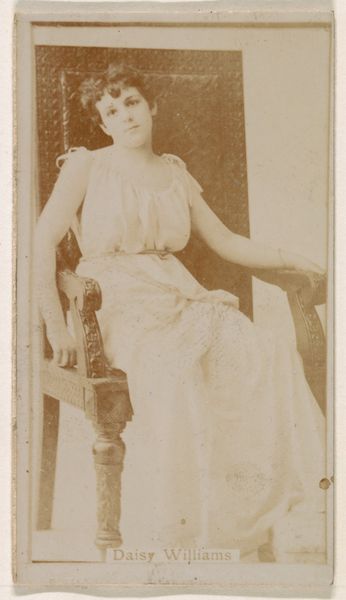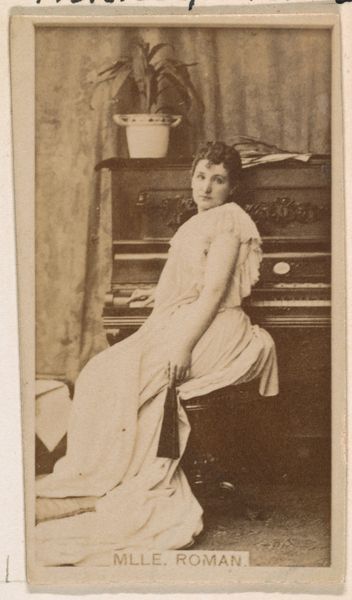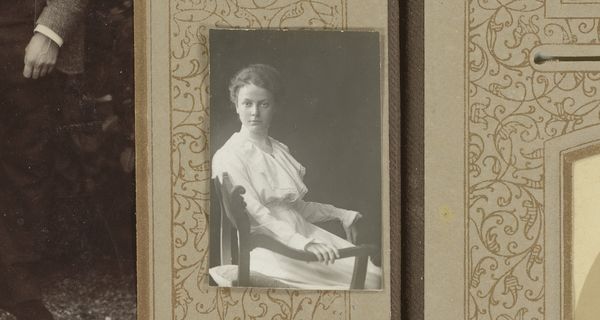
photography
#
portrait
#
bride
#
wedding photograph
#
pictorialism
#
charcoal drawing
#
photography
#
portrait reference
#
united-states
#
wedding dress
Dimensions: 7 15/16 x 5 7/8 in. (20.16 x 14.92 cm) (image)14 1/16 x 11 3/16 in. (35.72 x 28.42 cm) (mount)
Copyright: No Copyright - United States
Editor: This is John G. Bullock's photograph "Marjorie," created around 1902. It’s part of the Minneapolis Institute of Art's collection. It’s hard to tell if it’s just the photographic style, but there's a dreamy, almost melancholic quality to it. What stands out to you? Curator: Immediately, I see the weight of tradition and ritual pressing upon her. The dress itself, almost eclipsing her figure, signifies not just adornment, but also a social expectation, a prescribed role. Does the slight droop in her shoulders echo societal constraints of women at the turn of the century? Editor: Possibly. The soft focus, the limited contrast - is that deliberate, to enhance this sense of something being not quite real, or remembered? Curator: Exactly. Think about pictorialism: it aimed to elevate photography to art, in part through soft focus and tonal manipulation that recalled painting and etching. So it could be intended to communicate fleeting emotion, memory... think of Walter Benjamin and the "aura" he associated with original art objects. Do you feel this image projects its aura and summons the past? Editor: Yes, definitely, and a bit hauntingly. I find myself wondering what Marjorie's life was actually like, outside this constructed image. Curator: Consider then the flower she holds – a detail easily missed but full of implication. Is it a symbol of innocence, of blossoming potential, or something else entirely? Do flowers mark occasions, seasonal and memorable in our collective consciousness? Its presence hints at life's delicate unfolding but perhaps fleeting and vulnerable as well, no? Editor: That's a good point. The flower invites a closer consideration of the hopes and expectations tied to her future. It’s a very thoughtful composition when viewed this way. Curator: Indeed, the composition, imbued with symbolic gestures and ethereal techniques, transforms what could have been a simple portrait into a mirror reflecting an entire era’s cultural memory. Editor: Thanks, I now feel like I understand pictorialism a little better, as a method and as cultural reflection.
Comments
No comments
Be the first to comment and join the conversation on the ultimate creative platform.
